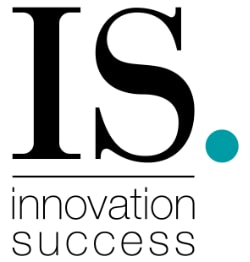Photo by Austin Chan on Unsplash.
The role of serendipity in innovation roadmapping
In the summer of 1926 an American husband and wife, Mr and Mrs Stimpson visited Kyoto.
They loved the ancient city with its architecture and history and it made quite the impression.
Nineteen years later, Henry Stimpson was Secretary of War under President Truman and was among a group of men deciding on the primary and secondary bombing sites.
Of the candidate cities, Kyoto and Kokura were under discussion but because of that holiday nearly two decades before, Stimpson had the primary site moved from Kyoto to Hiroshima.
On the second mission, cloud cover forced a new target from Korura to Nagasaki.
And so for acts of luck of fate, 200,000 people lived while an alternative 200,000 people died.
So, serendipity plays its hand.
We know stories of the invention that luck or accident happened; penicillin, nylon.
I called it “Bumping into things” and in my corporate innovation career, became known for stumblings into information and ideas.
A corporate sustainability and manufacturing excellence programme were two results of my bruisings.
How can we use serendipity for innovation roadmapping?
So, how, as innovation managers, can we turn the idea of serendipity to our advantage?
Serendipity, the occurrence of valuable discoveries by chance, can be a powerful driver of innovation. However, while serendipity is often perceived as a random event, leading corporate innovators and scholars have recognised that it can be cultivated and systematically leveraged to drive better insights and outcomes in innovation management.
Around ten years ago I bumped into the case of Merck and “Systematic Serendipity”
The global pharmaceutical company has effectively leveraged “systematic serendipity” to boost innovation. The concept revolves around creating structured processes and environments where chance discoveries can occur more frequently. They did this by:
- Creating Innovation Hubs: Merck set up dedicated innovation hubs where scientists and researchers from different disciplines could work together nearby. These hubs were designed to foster informal interactions and the free exchange of ideas, which often led to serendipitous discoveries.
- Encouraging Open Dialogues: Merck promoted open communication and dialogue across its various R&D teams, enabling the cross-pollination of ideas. This approach allowed insights from one area to inspire innovative solutions in another, often in unexpected ways.
- Leveraging External Partnerships: Merck strategically partnered with academic institutions, startups, and other organisations to bring in external ideas and perspectives. This openness to external input created more opportunities for serendipitous innovation.
In 2016 I read the book “The Science of Serendipity” by Matt Kingdon. He offers practical advice on how companies can harness serendipity to enhance innovation outcomes. Key recommendations include:
- Creating a Culture of Curiosity: Companies should encourage curiosity at all levels. Employees who are curious and open to new experiences are more likely to encounter and recognise serendipitous opportunities.
- Promoting Cross-Pollination of Ideas: Facilitating the exchange of ideas across different departments and teams can lead to unexpected insights. Kingdon suggests regular interactions between diverse groups to foster serendipity.
- Embracing the Unexpected: Kingdon argues that organizations should be open to unexpected outcomes and view them as opportunities rather than disruptions. By maintaining a flexible approach, companies can capitalize on unplanned discoveries.
- Storytelling and Narrative Sharing: Kingdon highlights the importance of storytelling in capturing and disseminating serendipitous discoveries. Sharing stories of past successes can inspire and guide future innovation efforts.
- Providing Space and Time for Exploration: Finally, Kingdon emphasises the need to create environments where employees have the time and space to explore new ideas without immediate pressure. This can lead to more moments of serendipity as individuals have the freedom to pursue unexpected paths.
I particularly like the narrative sharing because it cuts through dry data and rational argument directly.
To summarise I found Five Strategies Leading Corporate Innovators Use to Enhance Serendipity
- Cross-Disciplinary Collaboration:
- Encouraging collaboration across different departments or fields can lead to unexpected connections and ideas. By bringing together people with diverse expertise, companies increase the chances of serendipitous discoveries as individuals share different perspectives and knowledge bases.
- Open Innovation Ecosystems:
- Leading innovators build and maintain open innovation ecosystems, involving external partners such as startups, universities, and research institutions. This external engagement introduces fresh ideas and viewpoints, creating fertile ground for serendipitous innovations.
- Flexible Work Environments:
- Companies are increasingly promoting flexible work environments that allow for unstructured time and informal interactions. These environments create opportunities for spontaneous conversations and encounters, which can lead to unexpected insights and ideas.
- Technology and Data Analytics:
- Some companies use advanced data analytics and AI to identify patterns and connections that may not be immediately apparent. By analysing vast amounts of data, they can uncover hidden opportunities for innovation that could appear serendipitous.
- Failure Tolerance and Experimentation:
- A culture that tolerates failure and encourages experimentation allows for the exploration of unconventional ideas. By iterating rapidly and learning from mistakes, organisations can stumble upon innovative solutions that were not part of the initial plan.
So what?
Serendipity, while often considered a stroke of luck, can be systematically cultivated to drive innovation.
We NEED to create situations for serendipity to arise.
By fostering cross-disciplinary collaboration, creating open innovation ecosystems, promoting flexible work environments, leveraging technology, and encouraging experimentation, leading corporate innovators enhance the likelihood of serendipitous discoveries. Merck’s approach to “systematic serendipity” and the insights from The Science of Serendipity further illustrate how intentional strategies can harness the power of chance to generate significant innovation outcomes.
Running an innovation process properly set up for the delight of the new to arise is the very essence of what we can do together.

